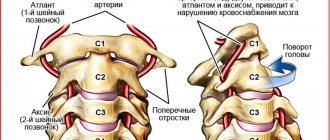Dementia is the name given to dementia acquired by a person throughout life, in contrast to mental retardation, when the weakening of mental abilities is associated with genetic abnormalities. There are several types of this disease, differing in the causes of occurrence and the nature of the course. The most common is dementia of the Alzheimer's type. This pathological process develops in the brain of people who are 65 years of age or older. Another form of the disease is somewhat less common when the patient’s age is less than 60 years.
Alzheimer's disease is popularly called senile insanity. Every year the number of sick people is growing steadily. This is partly due to increased life expectancy. The first signs of the disease are subtle, and the person has problems remembering new information. At first, short-term memory suffers, but as the disease progresses, problems with long-term memory arise, speech and cognitive functions are impaired.
The disease may not manifest itself for several years. After seeking professional help and discovering the disease, patients live, on average, about 7 years. Timely diagnosis and well-planned therapy can prolong the patient’s life by 12-15 years.
The causes of dementia of the Alzheimer's type are not fully understood. Only the key points are known, which include the formation of beta-amyloid plaques and the accumulation of neurofibrillary tangles in different parts of the brain. Modern medicine does not have a way to stop or slow down degenerative processes - the actions of specialists will be aimed at mitigating the symptoms and alleviating the patient’s condition.
Causes of development and progression of Alzheimer's disease
Many researchers are trying to figure out why degenerative processes begin in human brain tissue with age. There are three hypotheses explaining the possible causes of the development of this disease:
- The tau hypothesis is one of the youngest ones under study. According to this theory, pathological processes in the brain that lead to the development of dementia are triggered by changes in the structure of the tau protein. First, neurofibrillary tangles form inside the nerve cells, causing a malfunction in the neuron's transport system. Then the transmission of signals between individual cells stops, after which the death of neurons occurs;
- The amyloid hypothesis was discovered relatively recently - it is not yet 30 years old. Accumulations of beta-amyloid were identified as the main cause of the development of degenerative processes. There have been many different studies to support this theory, but a vaccine that can clear protein plaques from the brain is also not effective in treating dementia. Despite the fact that the amyloid theory is accepted as the main one by the scientific community, it does not make it possible to explain all the actions that occur in the human brain during the development of Alzheimer's disease. It is reliably known that a large number of amyloid plaques are not the direct cause of the disease - they only lead to the launch of degenerative operations. What really is the trigger for the onset of beta-amyloid deposition is not yet known;
- The cholinergic hypothesis was accepted immediately after the study of the problem of mental decline in older people began. Its authors believed that pathology develops as a result of a decrease in the synthesis of acetylcholine, which is a neurotransmitter. Over time, this assumption began to be considered unlikely, since drug reduction of acetylcholine deficiency is ineffective in the treatment of Alzheimer's type dementia . However, based on this theory, a large number of maintenance therapy methods have been developed, many of which are successfully used today.
In addition, many researchers believe that excessive sugar consumption can lead to the development of Alzheimer's disease. Glucose blocks the production of an enzyme that is necessary to prevent the development of degenerative processes in brain tissue.
Dementia of the Alzheimer's type
(
It is also called Alzheimer's disease (ICD-10
) is a primary degenerative dementia of late age, which is characterized by a gradual, subtle onset in presenile or old age, the steady progression of memory disorders and higher cortical functions up to the total collapse of intelligence and mental activity in general at late stages of the disease.This
is the most common form of primary degenerative dementia.
The diagnosis of dementia of the Alzheimer's type is based on the following obligate signs:
- presence of dementia syndrome;
- the development of multiple cognitive deficits, which is determined by a combination of memory disorders (deterioration of memorization of new and/or reproduction of previously learned information) and the presence of signs of at least one of the following cognitive impairments - aphasia (impaired speech function), apraxia (impaired ability to perform motor activity, despite normal motor functions), agnosia (inability to recognize or identify objects, despite intact sensory perception), impairment of intellectual activity (planning, programming, abstraction, establishing cause-and-effect relationships);
- These forms of primary degenerative dementia are not considered in this manual due to the exceptional rarity of such observations in psychiatric practice. These include, in particular, progressive supranuclear palsy, multiple system atrophy with dementia, amyotrophic lateral sclerosis with dementia, progressive subcortical gliosis, corticobasal degeneration, etc.
- impairments of memory and cognitive functions cause a decrease in the patient’s social or professional adaptation compared to the previous level;
- the course is characterized by a gradual, subtle onset and a steadily progressive decline in cognitive functions;
- lack of data from clinical or special paraclinical studies that could indicate that memory and cognitive disorders are caused by some other disease or damage to the central nervous system (for example, cerebrovascular disease, Parkinson's or Pick's disease, Huntington's chorea, subdural hematoma, hydrocephalus etc.) or a systemic disease that is known to cause dementia syndrome (for example, hypothyroidism, vitamin Bj2 or folic acid deficiency, hypercalcemia, neurosyphilis, HIV infection, etc.); severe organ failure, as well as a state of intoxication, including medication;
- signs of cognitive impairment are detected outside of states of stupefaction;
- cognitive impairment is not caused by any other mental illness (for example, depression, schizophrenia, mental retardation, etc.).
The use of the listed diagnostic criteria, which were developed by working groups of American and international experts and formed the basis of the corresponding sections of modern taxonomies of mental illnesses (DSM-IV, ICD-10), made it possible to increase the accuracy of clinical diagnosis of dementia of the Alzheimer's type (Alzheimer's disease) to 90-95 %. However, a definite diagnosis of Alzheimer's type dementia can only be made if it is confirmed by autopsy neuromorphological examination of the brain.
Neuromorphological picture
Dementia of the Alzheimer's type is characterized by typical signs, which include atrophy of the brain substance, loss of neurons and synapses, granulovacuolar degeneration, gliosis, senile (amyloid) plaques and neurofibrillary tangles in neurons, as well as amyloid angiopathy. However, only two of them - senile plaques and neurofibrillary tangles in neurons are considered as key neuromorphological phenomena of the disease and have diagnostic significance. In accordance with diagnostic guidelines developed by an international group of experts, the morphological diagnosis of dementia of the Alzheimer's type is based on a quantitative assessment of senile plaques and neurofibrillary tangles, the minimum number of which in the neocortex and/or hippocampus required to confirm the diagnosis varies depending on the age of the patient at the time of death. For example, the number of senile plaques (if neurofibrillary tangles are also present) in any part of the neocortex at the age of up to 50 years should be at least 2-5/mm2, at 50-65 years >8/mm2, at 66-75 >10/ mm2 and over 75 years of age more than 15/mm2. The introduction of these quantitative parameters to establish obligate diagnostic morphological signs of dementia of the Alzheimer's type is due to the fact that similar neuromorphological changes can be found in elderly people without signs of dementia, as well as in some other forms of brain pathology.
Description of the disease
Ancient Greek and Roman doctors wrote about the weakening of reason in old age. But for the first time this disease was noticed by Alois Alzheimer, who in 1901 began monitoring Augusta Deter. She was 50 years old and her dementia was getting worse every day. After the death of the patient, the doctor published materials containing an analysis of the disease that was later named after him.
Initially, Alzheimer's disease was the name given to dementia that develops in young patients, while older people were classified as people who develop senile dementia. Today, the diagnosis of Alzheimer's type dementia is made in the presence of characteristic symptoms that develop in a certain way and are accompanied by typical signs of neuropathology. The patient's age does not matter.
Alzheimer's disease is usually divided into four main stages, at each of which there is a progression of dysfunction:
- Predementia. Signs characteristic of this stage of the disease are often confused with the body's reaction to stressful situations. Minor cognitive impairments begin to appear approximately 5-7 years before a definitive diagnosis is made. Abnormalities can only be identified through detailed neurocognitive testing. The first problems with memory appear, the patient experiences difficulties in learning new material. The ability to plan is also lost, the first problems with concentration and abstract thinking appear, but they are little noticeable at this stage of the development of the disease. Apathy often appears, which is considered the most consistent sign of dementia at all its stages.
- Early dementia is more often characterized by impairments in speech and basic executive functions. Memory disorders recede into the background for some time. At this stage, a person is still able to operate with simple concepts in the process of verbal communication, performs everyday tasks without outside help, and perfectly remembers events from the past or information that was once memorized. But from the side of the patient it may seem awkward - this is due to the presence of some coordination problems and the loss of the ability to plan the movements of her body.
- Moderate dementia. As the disease progresses, it leads to a gradual loss of the ability to function independently. Disorders become obvious, the patient loses access to his own vocabulary. He pronounces the wrong words, inserting them into his speech instead of forgotten ones. Coordination is so impaired that the patient loses the ability to perform most daily tasks. At this stage, all types of memory noticeably deteriorate; the person no longer recognizes family members and other close people.
- Severe dementia is the last stage of the disease. A person at this stage is no longer able to cope without the help of other people. Speech communication is reduced to the pronunciation of individual phrases or words, and gradually this ability is lost. Body weight decreases sharply, the patient is in a state of severe apathy.
The result of Alzheimer's type dementia is the death of the patient. However, the real cause of death is often third-party diseases and pathologies, such as pneumonia or pressure ulcers.
Diagnosis of the disease
Before making a diagnosis, the doctor studies his medical history, talks with relatives, and makes his own observations. To identify characteristic signs of the disease and exclude other diseases that have a similar picture, hardware techniques are used, including computed tomography and magnetic resonance imaging.
In the early stages, doctors use various neuropsychological tests for diagnosis, since a neurological examination, as a rule, does not reveal any abnormalities. Therefore, the study should be more extensive. When assessing the patient’s condition, a conversation is held with his relatives, since the patient himself is not able to notice the violations and does not consider himself sick.
The results of a blood test identify causes of dementia that are not associated with the progression of Alzheimer's disease. Eliminating them can help eliminate the symptoms of the disease.
Relatively new methods for diagnosing the disease are techniques that allow observing beta-amyloid accumulations in brain tissue using a PET scanner. The development of the disease can also be judged by the amount of tau protein or beta-amyloid in the biological fluid from the patient's spinal cord.
Typically, diagnosis in the early stages of Alzheimer's disease is rare. First of all, this is due to the fact that neither the patient himself nor his relatives notice deviations from the norm and do not seek qualified help. The diagnosis is made only when functional impairments become too obvious.
As noted above, patients ultimately die not from Alzheimer's disease itself, but from concomitant diseases. The life expectancy of a patient depends on various factors, but researchers note that on average women live longer than men.
Diagnostics
People with Alzheimer's disease come to the attention of a psychiatrist and neurologist. At the first stage, it is important to collect an anamnesis about how the disease developed over time and to identify the presence of a hereditary predisposition.
To make a correct diagnosis, it is necessary to conduct a full examination and exclude diseases with similar symptoms (Parkinson's disease, Huntington's disease, tumors, hypothyroidism, cerebral atherosclerosis, etc.).
The examination must include:
- general blood analysis;
- hormonal status of the thyroid gland;
- blood test for HIV and syphilis;
- magnetic resonance imaging of the brain;
- electrocardiogram;
- electroencephalography;
- cerebrospinal fluid analysis.
In addition, there are special tests to test short-term memory, attention, speech, and self-care skills. They help determine the stage of Alzheimer's disease.
The diagnosis of Alzheimer's disease is made only after excluding diseases with similar symptoms. Mandatory diagnostic criteria are the gradual development of symptoms of dementia and progressive deterioration of memory. The diagnosis can be definitively confirmed by post-mortem histological examination of brain tissue under a microscope.
Alzheimer's disease therapy and patient care
It’s sad to realize, but today there is no cure for Alzheimer’s disease. None of the drugs used in the treatment of this disease can stop or stop the development of dementia. Researchers are working in this area, new drugs are being tested on rats and mice, but modern medicine only uses drugs that can eliminate some of the symptoms.
When working with a patient who is beginning to develop dementia of the Alzheimer's type, various psychological approaches are often used:
- Behavioral therapy will help determine the preconditions and consequences of problem behavior, as well as correct them. This method is not able to have a significant impact on the general condition of the patient, but it alleviates some of the problems;
- emotional therapy helps patients with mild forms of the disease adapt to their condition. The work is carried out individually or in groups, patients condemn memorable events from the past, look at photographs or videos;
- Cognitive therapy uses techniques to help patients become aware of their environment and understand their own place in it. Cognitive retraining can improve the patient’s condition, but as the disease progresses, the effect disappears;
- stimulating methods include therapies aimed at overall strengthening of the body, as well as creating a positive emotional background. Art therapy, music therapy, interaction with animals and exercise can improve the daily life of people with Alzheimer's disease.
Since the disease is incurable and degenerative in nature, family members of the patient have to organize constant care and supervision for him. This is an integral part of therapy throughout the illness.
First of all, it is necessary to ensure the safety of the patient. Locks will help limit access to dangerous objects, notes with the names of household items and brief instructions will help an elderly person cope with household chores. If he has lost the ability to feed himself, he will need to chop up food and help him eat it. In especially severe cases, the feeding process is carried out using a tube.
In the final stages of the disease, the main task of doctors and relatives of the patient is to alleviate his condition. At this stage, concomitant diseases develop that require professional intervention.
A test that can help detect dementia
If, even after detecting more than half of the accompanying signs of the disease, you doubt that your loved one is developing a serious pathology, ask him to complete a simple task. The MiniCog test makes it possible to detect dementia in its early stages with a high degree of probability.
- Ask your loved one to remember 3 words you suggested. They should not be related to each other in meaning - for example, a tablecloth, a dump truck, a feather.
- Ask the person to draw a round clock face from memory and indicate all the numbers and hands on it. At the same time, set a specific time - for example, 4:30.
- After he completes the second task, ask him what 3 words you asked him to remember.
A healthy person can easily complete the task. People with dementia make mistakes early in the development of the disorder. Thus, numbers are often arranged in a mirror manner, unnecessary numbers are added (after 12 they put 13, 14, etc.). That is, problems are already noticeable, and they can be noticed in a timely manner.
Possible options for depicting a watch dial by patients with dementia
If your relative did poorly on the test, you should not delay contacting specialists, for example, for consultation at a boarding house for elderly people with dementia. The sooner steps are taken to control the progression of the disorder, the greater the opportunity for successful treatment.
It is worth keeping in mind that a definitive diagnosis cannot be made based on the test your loved one has taken. Such exercises can prompt you to consult a specialist to identify the disease. Only a doctor can make a diagnosis, assess the severity of the pathology and prescribe effective treatment.
Prevention of disease development
Research into the causes of Alzheimer's disease does not provide clear guidance on how to prevent dementia. But, nevertheless, there are some factors that can influence the health of a person in old age:
- Diet. It has been found that people living in the Mediterranean region are less likely to suffer from Alzheimer's disease. In particular, this is due to the peculiarities of local nutrition. Olive oil, red wine, fish and seafood can have a mitigating effect on this disease. Cereals, wheat, vegetables and fruits are also useful. The brain needs curcumin, which is found in a popular spice. There is also evidence of the benefits of caprylic acid, which is part of coconut oil. The use of this product allows patients to regain the ability to perform simple household chores.
- High cholesterol levels, diabetes, smoking, and other factors in the development of heart disease and the entire cardiovascular system are often associated with the risk of developing severe forms of Alzheimer's disease.
- Brain training and intellectual activities. It was noticed that people who are fond of reading, solving puzzles and crosswords, playing musical instruments and speaking foreign languages developed Alzheimer's disease at a later age. Intellectual stress delays the onset of age-related pathological changes in brain tissue.
Also, some researchers have drawn attention to the relationship between the risk of developing the disease and the patient’s working conditions. It is believed that magnetic fields can trigger the onset of Alzheimer's disease. External factors also include heavy metals and solvents that enter the body. But today there is no reliable data on how the external environment affects the development of degenerative processes.
Alzheimer's disease is a serious problem for most countries, since dementia imposes a great burden and responsibility on society. This disease can develop in any person, regardless of his status and financial situation. The most discussed case was the illness of Ronald Reagan, the former President of the United States of America. The fact of his illness was covered by many media and served as the basis for the writing of scientific papers examining the impairment of cognitive functions in famous people with extraordinary abilities and a sharp mind.









